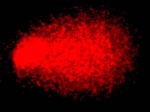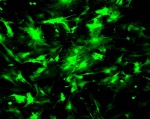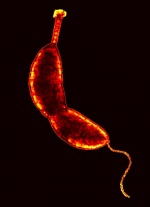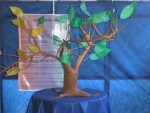Main Page
From DNA Repair Lab
(Difference between revisions)
| Revision as of 13:03, 21 December 2023 Root (Talk | contribs) ← Previous diff |
Revision as of 13:23, 21 December 2023 Root (Talk | contribs) (→<font color="#b2ff82">Research</font>) Next diff → |
||
| Line 7: | Line 7: | ||
| <br> | <br> | ||
| Inside of this: | Inside of this: | ||
| - | <h2><font size="3px"> '''Coordinator:''' [[Carlos Frederico Martins Menck|Carlos Frederico Martins Menck</font>]] </h2> | + | <div> |
| - | <br /> | + | [[Image:Novo_logo.PNG|thumb|200px|center]] |
| - | The DNA repair group is part of the [http://icb.usp.br/~bmm/ Department of Microbiology] and the [http://www.icb.usp.br/ Institute of Biomedical Sciences], located in the [http://www.usp.br University of São Paulo - USP], Brazil. | + | |
| - | We are a research group interested in the field of DNA damage, repair and their biological implications, such as cell death and mutagenesis. DNA lesions are constantly introduced by environmental agents (ie. pollution and even sunlight), genotoxic chemical products or also byproducts of the cellular metabolism, contributing to cancer formation and aging in human beings. To keep genetic information intact is essential to species survival, and thus, DNA repair processes are highly relevant mechanisms, evolutionarily conserved in all living organisms, from bacteria to human beings. | + | |
| - | <br> | + | <h2><font size="3px"> '''Coordinator:''' [[Carlos Frederico Martins Menck|Carlos Frederico Martins Menck]] </font></h2> |
| - | <br> | + | <br /> |
| + | The DNA repair group is part of the [http://icb.usp.br/~bmm/ Department of Microbiology] and the [http://www.icb.usp.br/ Institute of Biomedical Sciences], located in the [http://www.usp.br University of São Paulo - USP], Brazil. | ||
| + | We are a research group interested in the field of DNA damage, repair and their biological implications, such as cell death and mutagenesis. DNA lesions are constantly introduced by environmental agents (i.e., pollution and even sunlight), genotoxic chemical products, or also byproducts of cellular metabolism, contributing to cancer formation and aging in human beings. To keep genetic information intact is essential to species survival, and thus, DNA repair processes are highly relevant mechanisms, evolutionarily conserved in all living organisms, from bacteria to human beings. | ||
| - | |- | + | <br> |
| - | |height="100%" style= "background-color: #b2ff82"| | + | <br> |
| - | <br /> | + | |
| - | <font size="3px"><b>Our address:</b></font><br> | + | |- |
| - | Instituto de Ciencias Biomedicas 2, USP<br> | + | |height="100%" style= "background-color: #b2ff82"| |
| - | Laboratorio de Reparo do DNA - CVAT 116<br> | + | <br /> |
| - | Av Prof. Lineu Prestes, 1374<br> | + | |
| - | 05508-900 Sao Paulo, SP, Brasil<br> | + | |
| - | Phone: +55-11-3091-7499; Fax: +55-11-3091-7354<br> | + | |
| - | [http://maps.google.com/maps?f=q&hl=en&q=instituto+de+ciencias+biomedicas&layer=&sll=-23.542271,-46.696014&sspn=0.220008,0.213203&ie=UTF8&latlng=-23568060,-46733272,4567900069631289833&ei=6hEwRoC7F5vgqwKSnonSDA map] | + | <font size="3px"><b>Our address:</b></font><br> |
| - | |- | + | Instituto de Ciencias Biomedicas 2, USP<br> |
| - | <br /> | + | Laboratorio de Reparo do DNA - CVAT 116<br> |
| + | Av Prof. Lineu Prestes, 1374<br> | ||
| + | 05508-900 Sao Paulo, SP, Brasil<br> | ||
| + | Phone: +55-11-3091-7499; Fax: +55-11-3091-7354<br> | ||
| - | |height="100%" style= "background-color: #b2ff82"| | + | [http://maps.google.com/maps?f=q&hl=en&q=instituto+de+ciencias+biomedicas&layer=&sll=-23.542271,-46.696014&sspn=0.220008,0.213203&ie=UTF8&latlng=-23568060,-46733272,4567900069631289833&ei=6hEwRoC7F5vgqwKSnonSDA map] |
| - | ;<font size="3px"><b><nowiki>Do you want to know more about:</nowiki></b></font><br> | + | |- |
| - | :[[Xeroderma Pigmentosum]]?<br> | + | <br /> |
| - | :[[Gene therapy]]? | + | |
| - | <br /> | + | |height="100%" style= "background-color: #b2ff82"| |
| + | ;<font size="3px"><b><nowiki>Do you want to know more about:</nowiki></b></font><br> | ||
| + | :[[Xeroderma Pigmentosum]]?<br> | ||
| + | :[[Gene therapy]]? | ||
| - | <p>Our old web site is [http://www.icb.usp.br/~mutagene/old/ here]. | + | <br /> |
| - | |} | + | <p>Our old web site is [http://www.icb.usp.br/~mutagene/old/ here]. |
| - | |align="left" cellspacing="3" width="100%"| | + | |} |
| - | |style= "background-color: black; border: 1px solid #aaaaaa; padding: 10px"| | + | |align="left" cellspacing="3" width="100%"| |
| - | == [[Research|<font color="#b2ff82">Research</font>]] == | + | |style= "background-color: black; border: 1px solid #aaaaaa; padding: 10px"| |
| - | <p>[[Image:sun-uv.jpg|150px|Extreme Ultraviolet Imaging Telescope (EIT) image of a huge, handle-shaped prominence taken on Sept. 14,1999 taken in the 304 angstrom wavelength. Source: [http://photojournal.jpl.nasa.gov NASA]]]</p> | + | == [[Research|<font color="#b2ff82">Research</font>]] == |
| - | <p>[[Image:cometa1.jpg|150px|Comet assay with XP12RO cell line, treated with methylene blue and visible light]]</p> | + | <p>[[Image:sun-uv.jpg|150px|Extreme Ultraviolet Imaging Telescope (EIT) image of a huge, handle-shaped prominence taken on Sept. 14,1999 taken in the 304 angstrom wavelength. Source: [http://photojournal.jpl.nasa.gov NASA]]]</p> |
| - | <p>[[Image:gfp.jpg|150px|GFP expression in mouse cells, after adenovirus transduction.]]</p> | + | <p>[[Image:cometa1.jpg|150px|Comet assay with XP12RO cell line, treated with methylene blue and visible light]]</p> |
| - | <p>[[Image:caulobacter.jpg|150px|''Caulobacter crescentus''.]]</p> | + | <p>[[Image:gfp.jpg|150px|GFP expression in mouse cells, after adenovirus transduction.]]</p> |
| - | <p>[[Image:arvore.jpg|150px|Tree of life- Microbiology exposition.]]</p> | + | <p>[[Image:caulobacter.jpg|150px|''Caulobacter crescentus''.]]</p> |
| - | |} | + | <p>[[Image:arvore.jpg|150px|Tree of life- Microbiology exposition.]]</p> |
| - | |} | + | |} |
| + | |} | ||
| + | </div> | ||
Revision as of 13:23, 21 December 2023
|
New website here.
Coordinator: Carlos Frederico Martins Menck
|
Our address: map |
;Do you want to know more about: Our old web site is here. |
|align="left" cellspacing="3" width="100%"| |style= "background-color: black; border: 1px solid #aaaaaa; padding: 10px"| == Research ==<p>
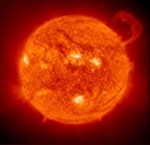
|} |}
